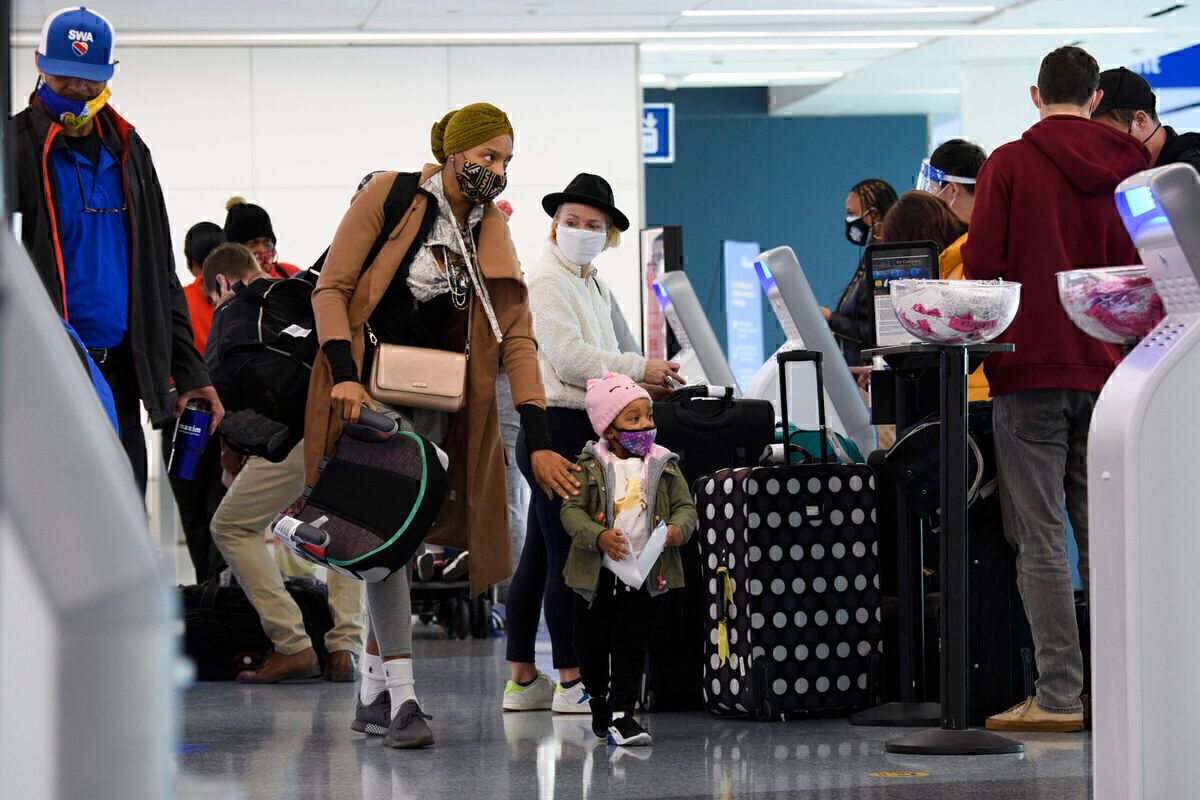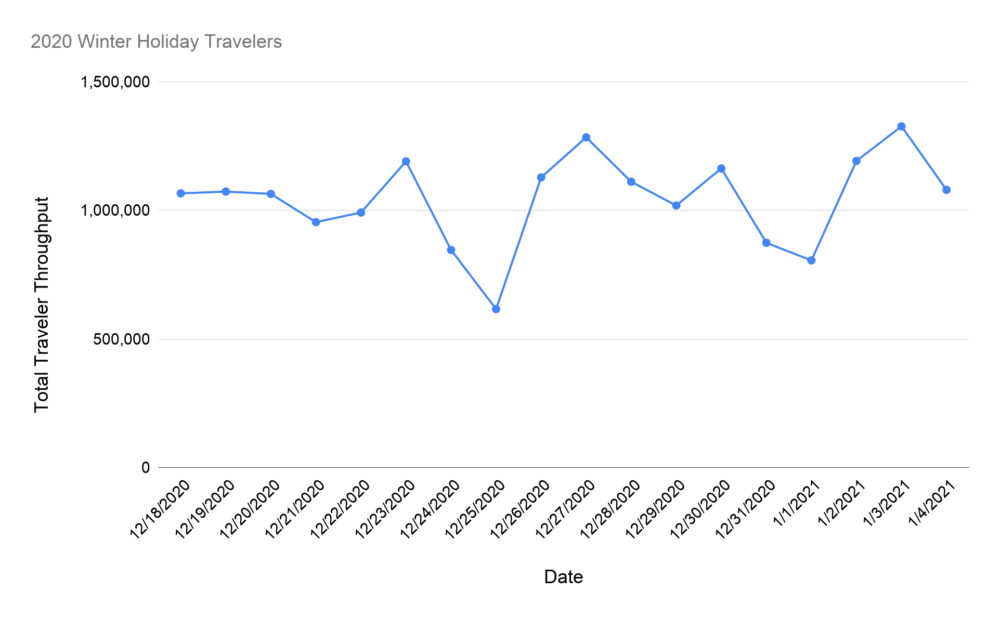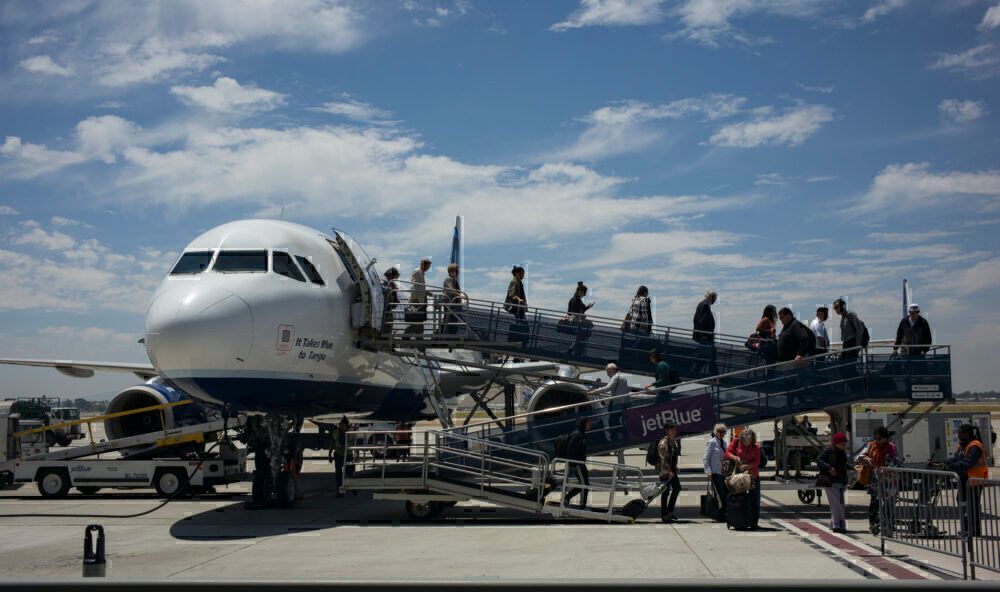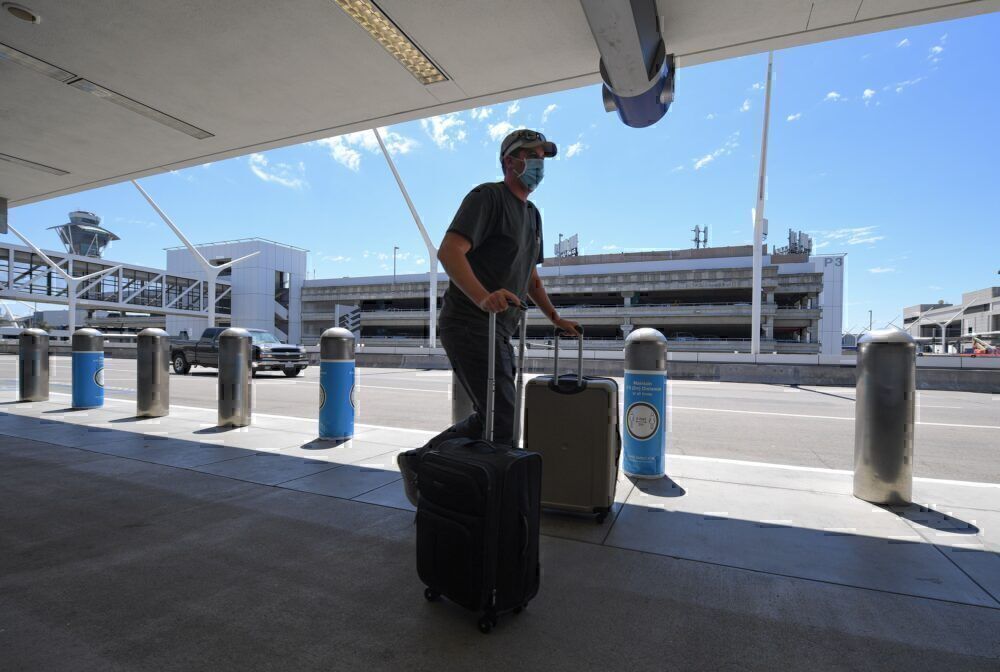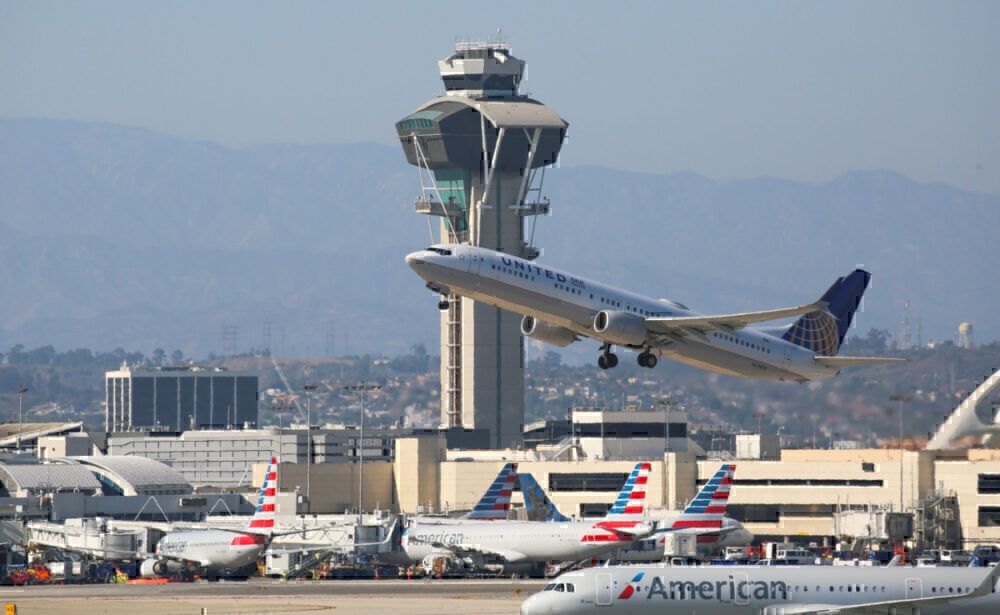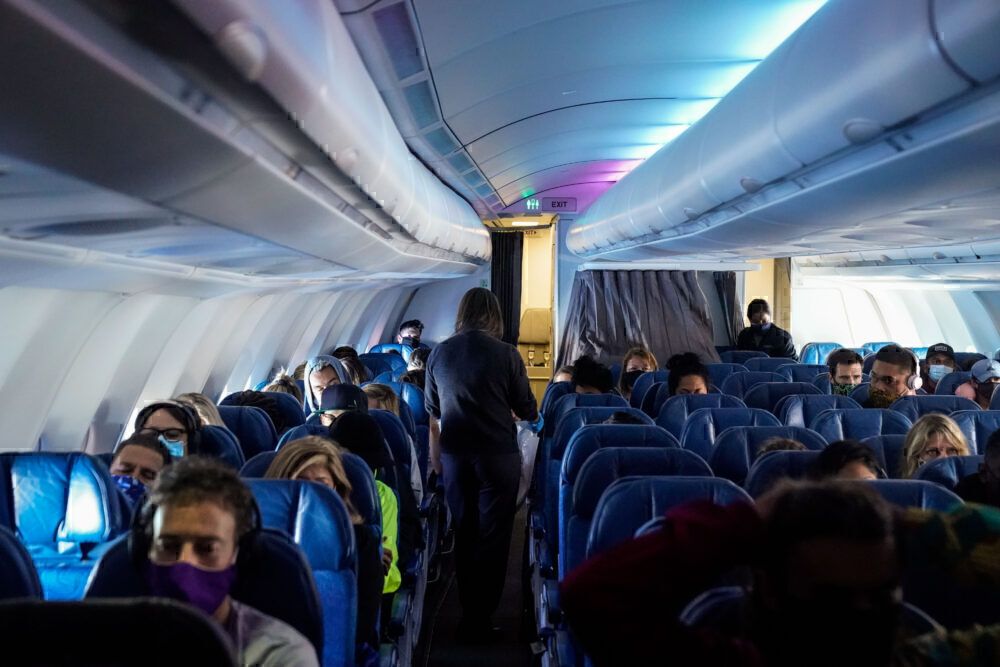Buoyed by the Christmas and New Years' holiday, US airlines saw a very healthy number of travelers, considering the times, step onboard an aircraft. From December 18th through January 4th, a total of nearly 18.8 million people passed through airport security checkpoints across the country.
A record travel period for 2020
An awful 2020 for US airlines had a bright spot in the two holiday periods at the end of the year. Thanksgiving and the December holiday period proved to be excellent numbers of daily travelers, with the latter leading to the highest single daily number of travelers since mid-March.
Below is a graph of daily traveler numbers from December 18th through January 4th:
The notable highs include:
- Sunday, January 3rd: 1,327,289 passengers
- Sunday, December 27th: 1,284,599 passengers
- Saturday, January 2nd: 1,192,881 passengers
- Wednesday, December 23rd: 1,191,123 passengers
- Wednesday, December 30th: 1,163,696 passengers
- Saturday: December 26th: 1,128,773 passengers
The total number of passengers who traveled from December 18th through January 4th totaled 18,795,068 passengers.
Of these 18 days of travel, only six days noticed below one million travelers in a day. Two of these were still north of 900,000. From lowest to highest, those days are:
- Friday, December 25th: 616,469 travelers
- Friday, January 1st: 805,990 travelers
- Thursday, December 24th: 846,520 travelers
- Thursday, December 31st: 874,406 travelers
- Monday, December 21st: 954,782 travelers
- Tuesday, December 22nd: 992,167 travelers
Christmas Day is a known low traveler day. Most people prefer to be with family or friends on Christmas. However, the days before and after the holiday are high traveler number days, as evidenced by this data.
Stay informed: Sign up for our daily aviation news digest.
What about compared to last year?
This year's 18,795,068 travelers are dwarfed by the 18-day period from the 2019 holiday season, which saw an impressive 42,365,252 passengers step onboard an aircraft.
The 2020 holiday period total traveler throughput was down about 56% compared to 2019's. This is in line with where US airlines are at the point of recovery. Most are operating at around 45% capacity year-over-year, and some are above that, but few are far above that.
The problem
Even though the December winter holiday period was a great time for US airlines, there is no guarantee that travel numbers will hold or increase. The coming days and weeks will show what appetite there still is for travel. Most people who are flying are embarking on domestic itineraries, especially to sun destinations and ski slopes.
The industry has been pretty stagnant at 45% year-over-year capacity, or thereabouts for the last few months. Revenue has been even worse. United, Alaska, and American all released guidance in December, indicating that their revenue would be down about 60-70% year-over-year, and cash burn was climbing up at both United and American.
US airlines face a structural disadvantage right now. Most are too big from a fleet perspective based on the number of customers that want to fly, and the number of destinations carriers could serve at a profit or at least break-even. This is why Delta Air Lines has been leading the way with aircraft retirements.
Even the planes that are flying are not going out full. In the third quarter of 2020, American Airlines, which flew one of the most robust schedules of all US airlines, notched a load factor of 58.9%. United Airlines, which flew less capacity than American, ended up recording a passenger load factor of 47.8%, while Delta's load factor was at 41%. However, it ended up flying more capacity than United, but less than American. Note that Delta is also blocking seats, so its load factor was pushed down artificially on some routes.
These load factors are nowhere near what US airlines need to turn a profit. Even low-cost carriers, like Spirit Airlines, with its 68.1% load factor, could not turn a profit.
The issue is that US airlines are not geared up for making money flying such empty planes. In the past, this was not much of an issue as passenger load factors were high and increasing. For example, in July of 2019, Delta notched a whopping 90% load factor.
Even with these two weeks of relatively stronger travel numbers, airlines are still earning less revenue because ticket prices are lower and long-haul moneymaking routes are either fully suspended, or entry restrictions make it nearly impossible for airlines to fill up their planes.
At 45% year-over-year, no one is celebrating, but airlines are hoping this number increases. Given how the first quarter is usually one of the year's slower travel seasons, expect some difficult times ahead. A more detailed picture of this will come out in the next few weeks as airlines report their fourth quarter and annual results.
Did you travel over the December holiday period in the US? Let us know in the comments!

